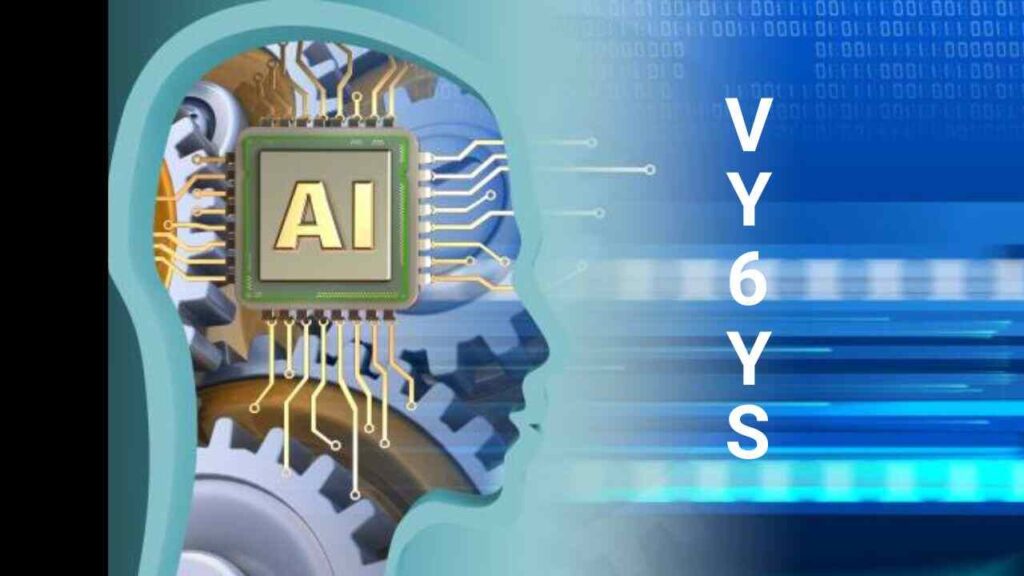In today’s fast-paced digital world, businesses are constantly seeking ways to enhance their customer service while keeping costs in check. Customer service AI has emerged as a game-changer, offering a solution to streamline operations and improve customer satisfaction. This cutting-edge technology is revolutionizing how companies interact with their clients, providing round-the-clock support and personalized experiences at scale.

As more organizations explore how to use AI for customer service automation, it’s crucial to understand the benefits and challenges involved. This article will guide you through the process of implementing AI-powered customer service solutions, from preparing your organization and choosing the right tools to optimizing and scaling your automated support systems. We’ll also delve into best practices for seamlessly integrating AI with human agents, ensuring a balanced approach that maximizes efficiency without sacrificing the human touch.
Understanding Customer Service AI
How To Use AI For Customer Service Automation?
Customer service AI refers to the use of Artificial Intelligence Technologies to enhance and automate various aspects of customer support. It involves leveraging intelligent systems to provide efficient, personalized, and round-the-clock assistance to customers. These AI-powered solutions can handle a wide range of tasks, from answering common queries to analyzing customer sentiment and predicting future needs.
At its core, customer service AI combines machine learning, natural language processing, and data analytics to create seamless interactions between businesses and their customers. This technology enables companies to offer quick responses, streamline support operations, and deliver a more satisfactory experience overall.
Benefits Of AI In Customer Service
Implementing AI in customer service brings numerous advantages to businesses and customers alike:
- 24/7 availability: AI-powered chatbots and virtual assistants can provide support at any time, ensuring customers receive assistance even outside business hours.
- Cost savings: By automating routine tasks, AI helps reduce operational costs associated with customer support.
- Personalization: AI analyzes customer data to deliver tailored recommendations and solutions, enhancing the overall customer experience.
- Improved agent productivity: AI assists human agents by providing relevant information and suggestions, allowing them to focus on more complex issues.
- Data-driven insights: AI tools analyze customer interactions to identify trends, helping businesses make informed decisions to improve their products and services.
Common AI Tools And Technologies
Several AI tools and technologies are commonly used to enhance customer service:
- Chatbots: These AI-powered virtual assistants can engage in text-based conversations with customers, answering frequently asked questions and guiding them through simple processes.
- Natural Language Processing (NLP): This technology enables AI systems to understand and interpret human language, facilitating more natural interactions between customers and automated systems.
- Sentiment analysis: AI algorithms can analyze customer feedback and conversations to gage emotions and satisfaction levels, helping businesses identify areas for improvement.
- Predictive analytics: By analyzing historical data, AI can anticipate customer needs and potential issues, allowing businesses to proactively address concerns.
- Voice recognition: AI-powered voice assistants can understand and respond to spoken queries, providing an additional channel for customer support.
- Machine learning: This technology allows AI systems to continuously improve their performance based on new data and interactions, resulting in more accurate and efficient customer service over time.
By incorporating these AI tools and technologies, businesses can significantly enhance their customer service capabilities, leading to increased customer satisfaction and loyalty.
Preparing Your Organization For AI Implementation
Assessing Current Customer Service Processes
Before implementing customer service AI, it’s crucial to conduct a thorough assessment of your existing operations. This evaluation helps identify areas where AI can add the most value and streamline processes. Look for repetitive tasks that consume a significant amount of your agents’ time, as these are prime candidates for automation. Additionally, analyze your customer service metrics to pinpoint pain points, such as long wait times or high call volumes, which AI can help alleviate.
To ensure a smooth transition, it’s essential to evaluate your current data infrastructure. AI relies heavily on high-quality, accessible data to function effectively. If your data is not properly structured or connected, introducing AI may not yield the desired results. Ideally, customer data should be centralized and unified to provide a holistic view of each customer’s journey. This enables AI-powered tools like chatbots to deliver personalized and accurate responses.
Setting Clear Goals And KPIs
To maximize the benefits of customer service AI, it’s crucial to establish clear objectives and key performance indicators (KPIs). By aligning your team with essential service goals, your business can enhance customer satisfaction, cultivate loyalty, and drive sustainable growth. Utilize analytics and customer feedback to identify improvement areas and set informed goals. This data-driven approach provides a baseline to measure progress and success.
When setting goals, consider metrics such as response time, customer satisfaction scores, and first-call resolution rates. These KPIs serve as indispensable indicators for measuring the performance of your customer service department. Implement a system for regularly tracking progress against each goal, which could involve weekly or monthly reviews of KPIs. Be prepared to adjust strategies based on these insights, ensuring continuous alignment with customer needs and business objectives.
Ensuring Data Quality And Availability
Data quality is crucial in artificial intelligence because it directly impacts AI models’ performance, accuracy, and reliability. High-quality data enables models to make better predictions and produce more reliable outcomes, fostering trust and confidence among users. To avoid the “garbage in, garbage out” problem, it’s essential to ensure that the data used in AI systems is accurate, representative, and of high quality.
To prepare your organization for AI implementation, focus on data cleaning, preprocessing, and augmentation. Address issues such as missing data, inconsistencies, and outdated information. Implement robust data governance frameworks to define quality standards, processes, and roles. This helps create a culture of data quality and ensures that data management practices are aligned with organizational goals.
Consider using data quality tools to automate cleansing, validation, and monitoring processes, ensuring that AI models have consistent access to high-quality data. Establish a dedicated team responsible for data quality to ensure continuous monitoring and improvement of data-related processes. This team can also educate and train other employees on the importance of data quality in AI implementation.
By thoroughly preparing your organization for AI implementation, you can set the stage for successful integration of “How To Use AI For Customer Service Automation”, leading to improved efficiency, enhanced customer experiences, and better overall business outcomes.
Implementing AI-Powered Customer Service Solutions
Selecting The Right AI Tools
When implementing customer service AI, choosing the appropriate tools is crucial. To enhance customer support experiences, businesses should focus on AI-powered chatbots and virtual assistants. These tools can handle routine inquiries, provide instant responses, and assist with tasks such as order tracking and troubleshooting. Natural Language Processing (NLP) technology enables AI systems to understand and interpret human language, facilitating more natural interactions between customers and automated systems.
Sentiment analysis tools can monitor customer feedback and social media interactions to gage customer satisfaction levels. This information helps businesses identify areas for improvement and address concerns proactively. AI-driven recommendation systems analyze customer behavior and preferences to provide personalized product or content recommendations, enhancing the overall customer experience about how to use AI for customer service.
Integrating AI With Existing Systems
To maximize the benefits of customer service AI, it’s essential to integrate AI tools with existing systems seamlessly. This integration allows for a smooth transition and improved collaboration between AI and human agents. Businesses should ensure that AI solutions can access and process customer data from various sources, such as CRM systems and knowledge bases.
Implementing an API strategy is crucial for connecting AI tools with third-party systems. This enables AI to take action on a customer’s behalf, such as processing returns or resetting passwords. To facilitate this integration, companies should have technical resources available to help pull information like account balances, order statuses, and account types.
Training AI Models On Company Data
To provide accurate and relevant responses, AI models need to be trained on company-specific data. This process involves feeding the AI system with high-quality, curated content from various sources, including knowledge bases, support documentation, and previous customer interactions.
Before connecting AI to your knowledge base, ensure that all information is accurate and up-to-date. Centralize your support documentation to serve as a single source of truth for both agents and customers. This thoughtful preparation of your knowledge base architecture will save time in the long run and improve the AI’s performance.
When using generative AI to create content, establish a consistent brand persona that aligns with your company’s values and messaging. Apply this persona throughout all content and customize the AI’s appearance to boost engagement.
Human oversight remains crucial in the training process. While AI can speed up content creation, a bot builder or manager should review AI-generated responses to ensure they are safe, truthful, and helpful. This feedback loop further improves the AI model’s performance over time.
By carefully selecting AI tools, integrating them with existing systems, and training models on company-specific data, businesses can implement powerful customer service AI solutions that enhance efficiency, improve customer satisfaction, and drive innovation in their support operations.
Optimizing And Scaling Your AI Customer Service
Monitoring AI Performance
To ensure the effectiveness of customer service AI, it’s crucial to track key performance indicators (KPIs) continuously. One important metric to monitor is the Average Handle Time (AHT), which measures how quickly customer inquiries are resolved. A decrease in AHT often indicates improved efficiency in meeting customer needs. It’s beneficial to measure handling time separately for requests resolved entirely by AI and those requiring human intervention. This approach provides a clear picture of “How To Use AI For Customer Service” efficiency and complements human efforts.
Another vital metric to consider is the Resolution of Automation Rate (ROAR). This innovative measure assesses the percentage of customer inquiries resolved through automated systems without human intervention. ROAR offers insights into how well automation handles customer issues, reducing the workload on human agents and speeding up resolution times.
Customer satisfaction (CSAT) scores are equally important in evaluating AI’s service quality. Regularly monitoring CSAT scores ensures that the implementation of customer service AI meets expectations. Comparing scores from human and AI interactions helps strike the perfect balance between “How To Use AI For Customer Service Automation” speedy service and customer happiness.
Continuously Improving AI Capabilities
To enhance AI capabilities “How To Use AI For Customer Service Automation”, businesses should focus on leveraging data effectively. By analyzing vast amounts of customer data, AI can derive actionable insights, helping businesses understand customer behavior, preferences, and pain points. This information is crucial for making informed decisions to optimize processes and continually improve customer service.
Implementing Retrieval-Augmented Generation (RAG) in conversational chatbots and AI assistants can tailor responses to the context of customer queries more effectively. This approach enhances the accuracy and relevance of AI-generated responses, leading to more satisfactory customer interactions.
It’s also important to maintain a human-in-the-loop process for both AI training and live deployments. This collaborative approach between AI and human agents ensures that customer engagement remains efficient and empathetic. Regular feedback from human agents can highlight areas where AI may falter and suggest improvements or new applications that developers might not have considered. Learn how to use AI for customer service automation to streamline responses, improve efficiency, and enhance customer satisfaction.
Expanding AI Across Customer Touchpoints
To scale “How To Use AI For Customer Service Automation” AI effectively, businesses should consider deploying AI-powered solutions across various communication channels. This omnichannel approach allows for seamless customer experiences, regardless of the touchpoint customers prefer.
Implementing AI-powered chatbots across email, social media, live chat, and messaging apps can help scale support across channels. These chatbots can handle routine inquiries, provide instant responses, and assist with tasks such as order tracking and troubleshooting. This frees up human agents to focus on more complex issues that require a personal touch.
AI can also enhance self-service options for customers who prefer to solve issues independently. AI-powered tools like virtual assistants can provide instant information, guide users through troubleshooting processes, answer frequently asked questions, and assist with transactions. By improving “self-service options, AI empowers customers and “How To Use AI For Customer Service Automation” reduces the workload on contact centers.
As businesses expand their AI capabilities, it’s crucial to maintain transparency with customers about “How To Use AI For Customer Service Automation” and the benefits it provides. This builds trust and acceptance, ultimately leading to higher customer satisfaction and loyalty.
Conclusion
The integration of “How To Use AI For Customer Service Automation” is causing a revolution in how businesses interact with their clients. By leveraging AI-powered tools like chatbots, sentiment analysis, and predictive analytics, companies can offer round-the-clock support, personalized experiences, and faster resolution times. This tech not only boosts efficiency but also frees up human agents to tackle more complex issues, leading to improved customer satisfaction and loyalty.
To make the most of “How To Use AI For Customer Service Automation”, businesses need to carefully plan its implementation, choose the right tools, and continuously fine-tune their systems. It’s crucial to keep an eye on key metrics, gather feedback, and adapt strategies as needed. By expanding AI across various customer touchpoints and maintaining a balance between automation and human interaction, companies can create seamless, efficient, and satisfying customer experiences that drive growth and success in today’s competitive market.



